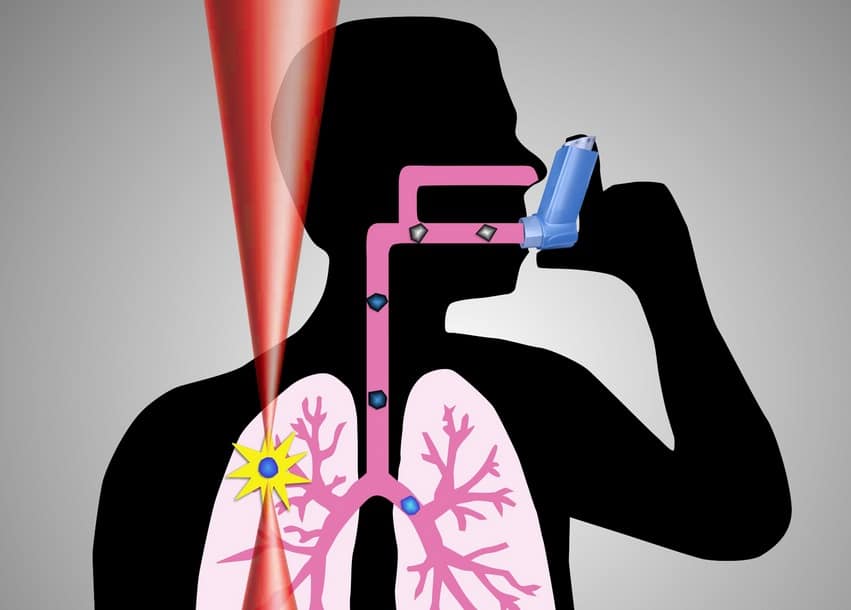
Laser testing could lead to improved asthma therapies
pharmafile | November 13, 2014 | News story | Research and Development, Sales and Marketing | Oxford, asthma, pmdis, pope, stfc
UK scientists have used a laser beam trap to examine how drug particles from asthma inhalers travel through the air into the lung.
The project could lead to improvements in the design of inhalers so their effectiveness is improved whilst side effects are reduced, according to the team behind the work.
The researchers – from the Science and Technology Facilities Council (STFC) Central Laser Facility in Oxford – trapped individual, microscopic particles of the bronchodilator drug salbutamol sulphate and suspended them in the air to test how they behave in a simulation of the conditions in the human respiratory system.
This is the first time this type of modelling has been carried out, according to the team, and the experiments are already providing clues to ways in which inhaler technology could be improved.
Pressurised metered dose inhalers (pMDIs) have been the mainstay of inhaled asthma therapy for decades and still make up more than three quarters of the world asthma drug market, despite delivering only around a third of the drug payload of newer dry powder inhalers (DPIs).
DPIs are also not particularly effective, with the best examples delivering only a third of each drug dose into the lungs, and there is quite a lot of variation between devices in terms of user-friendliness and cost-effectiveness.
“The human respiratory tract is anatomically evolved to prevent particles being inhaled”, says Peter Seville of the University of Birmingham, one of the researchers on the project.
Drug particles typically have to have a diameter less than a tenth the width of a human hair to have a chance of getting into the lungs, he added, but moisture in the lungs can cling to the particles, making them bigger and affecting how deeply they penetrate the respiratory tract.
In turn, “that can result in the drug being deposited in a non-ideal site, giving rise to less effective treatment and potentially an increase in side effects,” according to Seville.
The researchers discharged the inhaler into the optical laser trap, which allowed particles to be captured and levitates in air. Then, using a technique called Raman spectroscopy, they recorded their size, shape and chemical signature to show evidence of any water adsorption. Particle behaviour was tested at different temperatures and levels of humidity.
Lead investigator Francis Pope from the University of Birmingham said that the research could not only lead to more efficient inhaler designs, but potentially also allow improvements in the chemical structure of drugs to make particles less likely to adsorb water.
“Asthma is a complex condition that affects 1 in 11 people in the UK, yet years of research underfunding means it still remains a relative mystery,” commented Samantha Walker, director of research and policy at medical charity Asthma UK.
“This research looks very promising and could lead to the development of new inhaled treatments that are more targeted and effective.”
The research is published in today’s edition of the Royal Society of Chemistry’s Chemical Communications journal.
Phil Taylor
Related Content

GSK’s low carbon inhaler, Ventolin, progresses to phase 3 trials
GSK has announced that in 2024 it intends to start phase 3 trials of a …

Lupin Healthcare launches Beclu carbon neutral inhalers for asthma treatment
UK-based subsidiary of Lupin Limited, Lupin Healthcare, has announced the UK launch of its carbon …

Asthma drug Dupixent sees positive results in child trials
Data presented at the 2021 American Thoracic Society International Conference from a Phase III trial …








